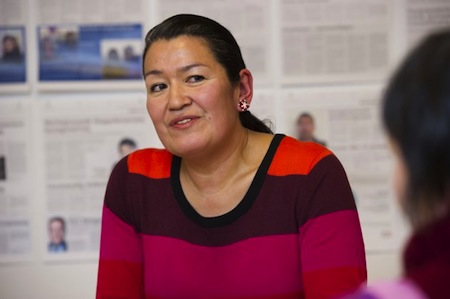With the election results in, Greenland has made a decision to pull back — if only slightly — from the full-speed ahead instinct that’s propelled such deep mineral exploration in the past four years, including widespread interest in the island of 57,000 from everyone from the European Union to China.![]()
![]()
The populist leadership of Aleqa Hammond has returned the social democratic Siumut (Forward) to power — the party ruled Greenland for thirty years from home rule in 1979 until 2009. In Tuesday’s election, Siumut won 42.8%, entitling it to 14 seats in the new Greenlandic parliament.
Its chief opponent, the governing Inuit Ataqatigiit (‘Community of the People’), won just 34.4%, entitling it to 11 seats.
Three remaining parties each won two seats: the center-right Atassut (Solidarity, or ‘Feeling of Community’) with 8.1%, the Partii Inuit (Inuit Party), which won 6.4% and seeks a referendum on new Greenlandic laws with respect to mining exploration and foreign workers, and the independence-skeptical Demokraatit (Democrats), with 6.2%, who formed a governing coalition with the Inuit Ataqatigiit from 2009 to 2013 under prime minister Kuupik Kleist.
It seems much more likely than not that Hammond will form the next government.
Hammond campaigned on a program that remained critical of a recent large-scale development law that would open the way to widespread foreign migrant labor and the exploration and development of gold, iron, oil, natural gas, rare earth elements and uranium — with the advent of climate change, the island, an autonomous country within the kingdom of Denmark, has garnered increasing attention from global mining interest.
Like Inuit Ataqatigiit, Hammond’s party is essentially pro-development, though with stringent social and environmental standards, if somewhat less enthusiastic about Greenland’s ultimate independence.
